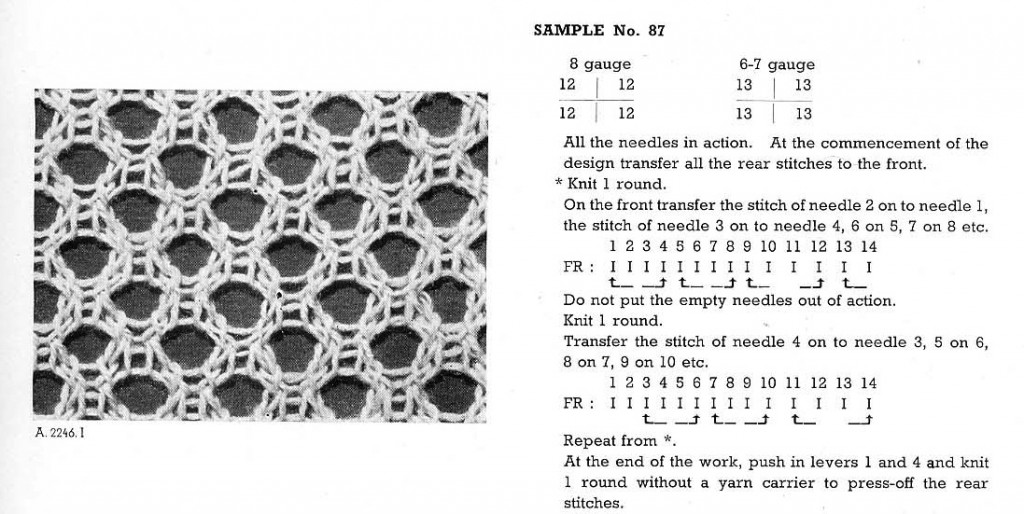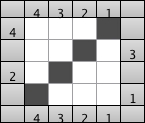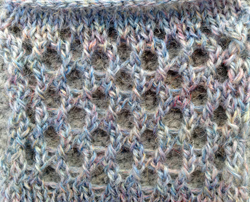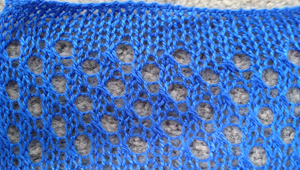This is a lace sample created on a dubied industrial knitting machine
I became curious as to how to duplicate it and decided to use needle selection to help track the transfers rather than counting needles by hand. The repeat is a small one, suitable for both electronics and punchcards. Below is its configuration on my 910, punchcard knitters may want to flip the repeat to match the directions for knitting as written.
the sample’s knit side
its purl side
end needle selection (KCII here) must be used any time there are needles out of work in the pattern
transfers are always made toward the carriage
single empty needled are put OOW after transfers across row
pairs of empty needles after they are created are returned to work before the next row of knitting to create side-by-side loops
in my case, odd rows transfers were —>, even <—
single rows are knit after each set of transfers
1.KCII <—, transfer selected needles <—, move empty needles OOW
2. select row 2 as carriage knits —>, transfer selected needles —>, there will be two empty needles, side by side; bring all needles in work across the row
3. knit <—here there will be 2 loops side by side on adjoining emptied needles; check that no loops have dropped off, rehang and adjust tension if needed; transfer selected needles toward the carriage _ move single now emptied needles OOW
as this row and the next row are knit and transferred, side-by-side loops will become stitches, and another 2-loop set will be created
4. knit —>, transfer selected needles —> onto the adjoining loop, there will be 2 empty needles side by side, bring all/pairs needles in work across the row
repeat steps 3 and 4 for the remainder of the fabric
my previous posts on large eyelet lace were created using the lace carriage
large eyelets, and diagonal large eyelets
a cousin of sorts may be achieved by using the following punchcard lace repeat; the lace carriage selects and transfers for 4 passes, the knit carriage follows with 2 rows of knitting throughout; stitches are transferred, doubled up, and transferred again, so yarn choice, weight, and tension may need a lot of editing.
There is an added post on automating such large meshes published in July 2020




